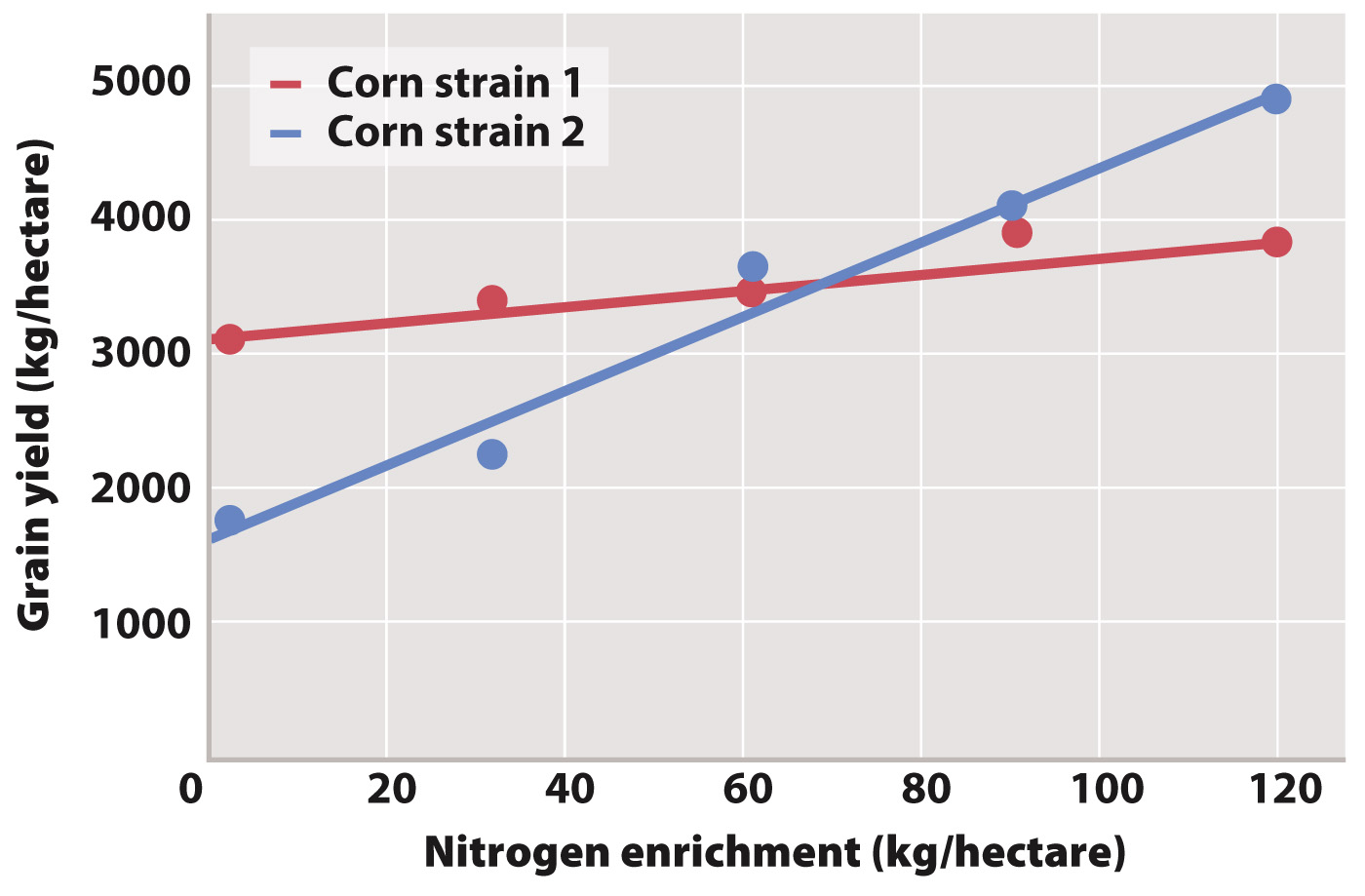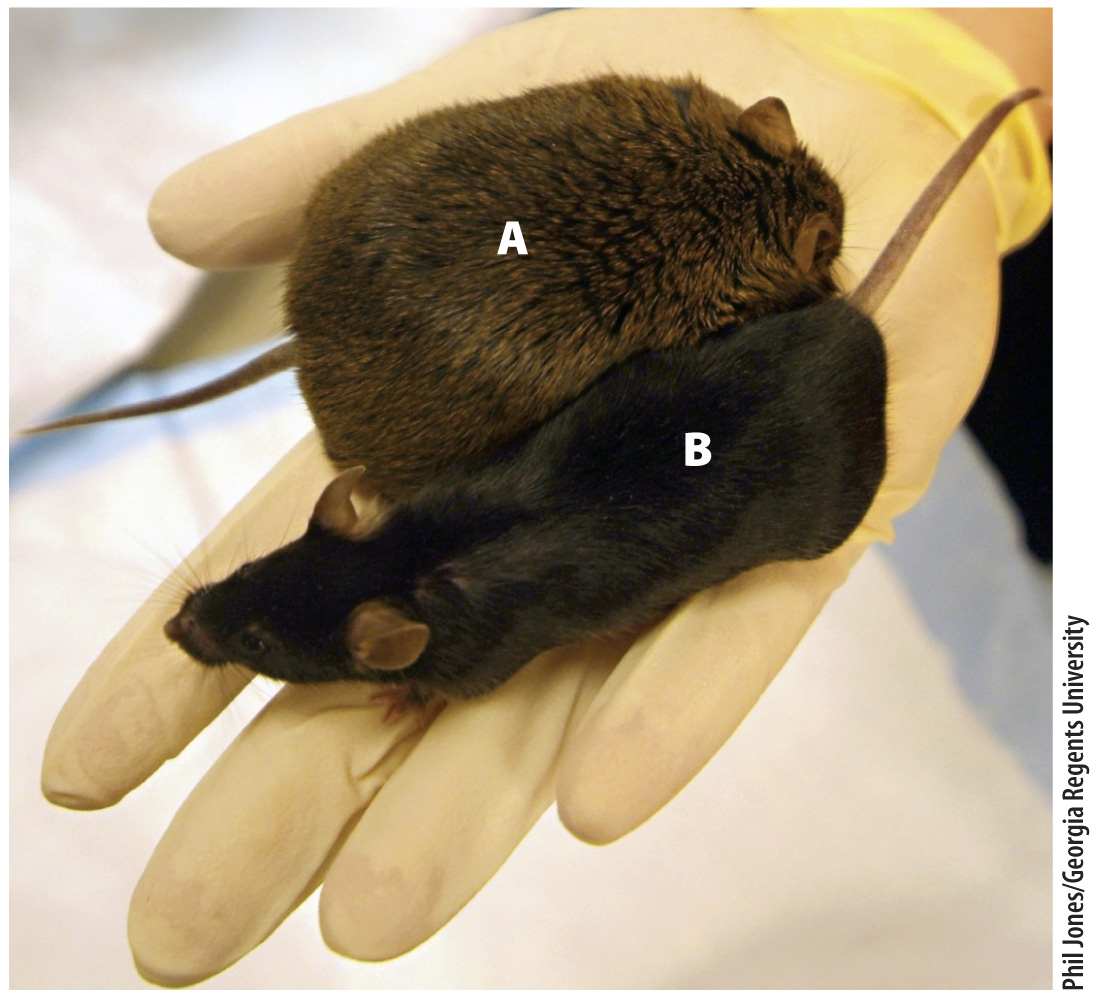Genetic and environmental effects can interact in unpredictable ways.
One of the features of complex traits is that genetic and environmental effects may interact, often in unpredictable ways. Consider the example shown in Fig. 18.5. In this experiment, two strains of corn were each grown in a series of soils in which the amount of nitrogen had been enriched by the growth of legumes. The yield of strain 1 varies little across these different environments. The yield of strain 2, however, increases dramatically with soil nitrogen. Each of the lines is known as a norm of reaction, which for any genotype graphically depicts how the environment (shown on the x-axis) affects phenotype (shown on the y-axis) across a range of environments. Note that in one case in Fig. 18.5, the environment has little to no effect on the phenotype (the norm of reaction is nearly flat), but in the other it has a very noticeable effect. In cases like strain 2, it is impossible to predict the phenotype of a given genotype without knowing what the environmental conditions are and how the phenotype changes in response to variation in the environment.

FIG. 18.5 Genotype-by-environment interaction for grain yield in corn. The effect of soil nitrogen on grain yield is minimal in strain 1, but dramatic in strain 2. Data courtesy of J. W. Dudley.
Such variation in the effects of the environment on different genotypes is known as genotype-by-environment interaction. This type of interaction is important because it implies that the effect of a genotype cannot be specified without knowing the environment, and the other way around. A further implication is that there may be no genotype that is the “best” across a broad range of environments, and likewise no environment that is “best” for all genotypes. For complex traits, phenotype depends on both genotype and environment. For the strains of corn in Fig. 18.5, for example, which strain is “better” depends on the soil nitrogen. With little nitrogen enrichment, strain 1 is better; at intermediate values, both strains yield about the same; and with high nitrogen enrichment, strain 2 is better. In this case, knowing the norms of reaction, and recognizing the magnitude and direction of genotype-by-environment interaction, allow each farmer to use the strains likely to perform best under the available conditions of cultivation.
Genotype-by-environment interaction makes the interplay between genes and the environment difficult to predict. An example of genotype-by-environment interaction affecting obesity is shown in Fig. 18.6. The animals shown are adults of two inbred lines of mice. When fed a normal diet, both inbred lines grow to about the same size. When fed a high-fat diet, however, the inbred line A becomes obese, but inbred line B does not. Hence, it is not genotype alone that causes obesity in line A because with a normal diet, line A does not become obese. Nor is it a high-fat diet alone that causes obesity, because the high-fat diet does not cause obesity in line B. Rather, the obesity in line A results from a genotype-by-environment interaction (which in this case is a genotype-by-diet interaction).

FIG. 18.6 Genotype-by-environment interaction for obesity in mice. When fed a normal diet, both inbred lines grow to about the same size. When fed a high-fat diet, mouse A becomes obese but mouse B does not.

